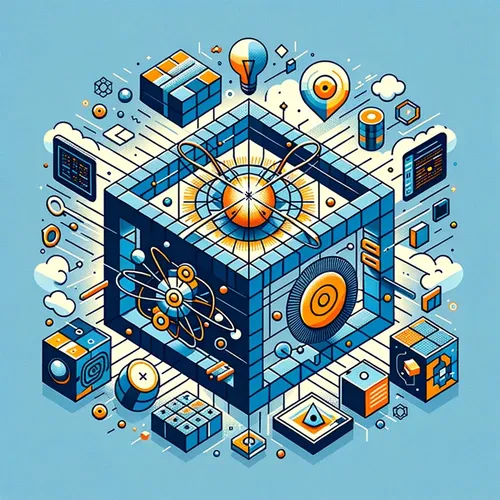Quantum-Classical Hybrids: Unleashing AI's Future | Quantum Computing 101
- Author
- Quiet. Please
- Published
- Wed 30 Jul 2025
- Episode Link
- https://www.spreaker.com/episode/quantum-classical-hybrids-unleashing-ai-s-future-quantum-computing-101--67190043
This is your Quantum Computing 101 podcast.
You’re joining me, Leo—the Learning Enhanced Operator—and today, in the chilled hum of my quantum lab, every surface bathed in the blue glow of supercooled circuits, we are right at the boundary of classical and quantum computing. No lengthy preamble. I want to take you straight to the frontlines, where yesterday’s silicon logic meets tomorrow’s entangled possibilities.
This week, the quantum-classical hybrid approach has taken the spotlight. Maybe you saw the headline: NVIDIA—the AI and GPU powerhouse—announcing new quantum processing units, or QPUs, designed to integrate directly with their classic GPUs. Jensen Huang himself described this as the infrastructure leap enabling real-time error correction and quantum acceleration, all inside a familiar cloud stack. By pairing classical brute force with quantum finesse, researchers are now simulating quantum algorithms efficiently—accelerating AI model training and pushing optimization problems past traditional bottlenecks.
But why is this so electrifying? I’ll draw you into the heart of a hybrid workflow. Imagine an optimization challenge: routing thousands of delivery trucks. A classical computer—think rows and rows of humming NVIDIA GPUs—pre-processes gargantuan datasets, mapping highways and neighborhoods, eliminating obvious dead-ends. Then, for the labyrinthine core—a subproblem so dense it feels like a conceptual black hole—a quantum annealer like D-Wave’s Advantage2, with 1,200 qubits, steps in, finding hidden patterns through quantum tunneling and superposition. The answer emerges, hybrid-style: classical pre-processing for scale, quantum for true complexity. BMW already uses this approach to engineer new car materials, running massive simulations on classical sides, while quantum processors unlock subatomic insights that classical bits can’t unravel.
But the science doesn’t pause at logistics. Two days ago, French physicist Eleni Diamanti’s team published a protocol for quantifying quantum information transfer even when the communication hardware isn’t fully trusted—a vital advance in making quantum-classical networks secure, dynamic, and robust against attacks. This news rippled through the halls of the International Year of Quantum Science and Technology, declared by the United Nations to mark just such moments where quantum becomes practical.
To me, these hybrid advances are like world diplomacy: classical computing lays the procedural groundwork, quantum brings nuance, ambiguity, negotiation—two minds joined, solving what neither could alone. Progress is incremental but dramatic. Last week, Finnish researchers at Aalto University demonstrated transmon qubits with millisecond-long coherence—a lifetime in quantum terms—hinting that soon, classical-quantum handshakes will span deeper into uncharted algorithms, medicine, finance, energy, and beyond.
As I leave you amid the hum of my dilution fridge and the dancing energy of entangled qubits, remember: quantum-classical hybrids aren’t just technical marvels—they’re the blueprint for a new computing era, the handshake of the predictable and the unknowable.
Thank you for listening to Quantum Computing 101. If questions spark in your mind, or there’s a topic burning for on-air dissection, send me a message at [email protected]. Subscribe for more; this has been a Quiet Please Production, and for information, head over to quietplease.ai. Stay quantum curious!
For more http://www.quietplease.ai
Get the best deals https://amzn.to/3ODvOta
